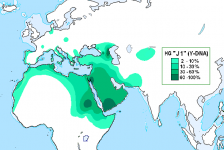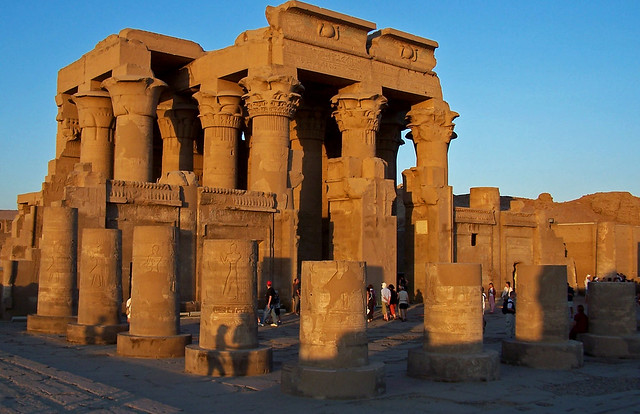Angela
Elite member
- Messages
- 21,823
- Reaction score
- 12,329
- Points
- 113
- Ethnic group
- Italian
Why is that Angela? Just out of curiosity the dna analises of Ramses is not conclusive?
Thats correct but that would be the V88 type. Do we have a time when R1b migrated back to Africa? If not mistaken the re migration took place through Iberia. Would it have spread back to North Africa by that time?. I know some of the R1b V88 is present in North Africa in current populations
So far as I know the yDna analysis of Ramses is correct, which means he was indeed, as you pointed out, E1b1a. However, he was from the 20th Dynasty (his rule started in 1186 BC). Expredel stated that Tutankhamen, who was from the 18th dynasty (he ruled from 1361 to 1352 BC), was yDna R1b M269, and he was assuming, I believe, that as Tut was from an earlier dynasty than Ramses, his R1b lineage is the original lineage of the Pharaohs of Egypt.
The only so called "proof" that Tut was R1b is that during a presentation about the testing of Tut's remains a screen shot of yDna results was shown when they were describing the testing, and when the values from that screen shot were run through a predictor it's claimed that the values are those of someone who is R1b. That may in fact be the case, but we don't know if the screen shot was of a default result, perhaps that of one of the scientists, and was just used for demonstration purposes, or if it was indeed a screen shot of Tutankhamen's results.
Anyway, my point was that even if Tutankhamen was R1b, that would not be any proof that all the prior Egyptian dynasties were R1b, much less M269.
My comment about the Hyksos was because some people used to speculate that the Hyksos were an Indo-European group related to the Hittites. That's no longer considered a mainstream idea, with most experts now believing they were a Semitic speaking group related to Canaanites. Of course, there is R1b in the Near East, and not just of the V88 variety, so it's possible there was some in the Hyksos, although I doubt it was M269. Still, ancient dna can surprise, so I never say never.
http://en.wikipedia.org/wiki/Hyksos
When people talk about the back-migration of Eurasians into Africa they can be talking about the very early movement of the "E" lineages back to Africa (if the researcher thinks early forms of "E" might have been in Arabia or in the Levant, for example), or the movement of R1b herders (V88) down into Africa, or perhaps the "J" lineages.




